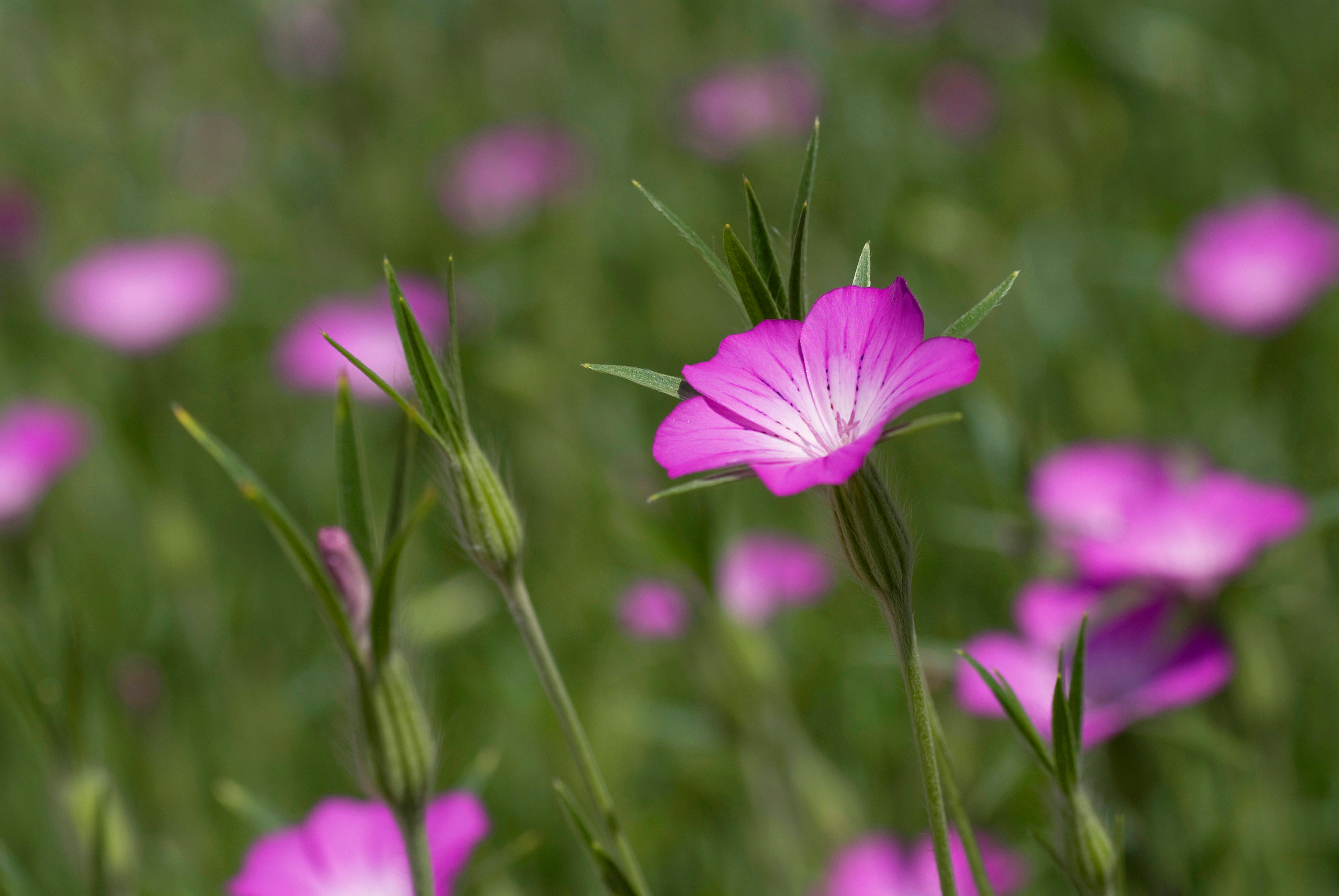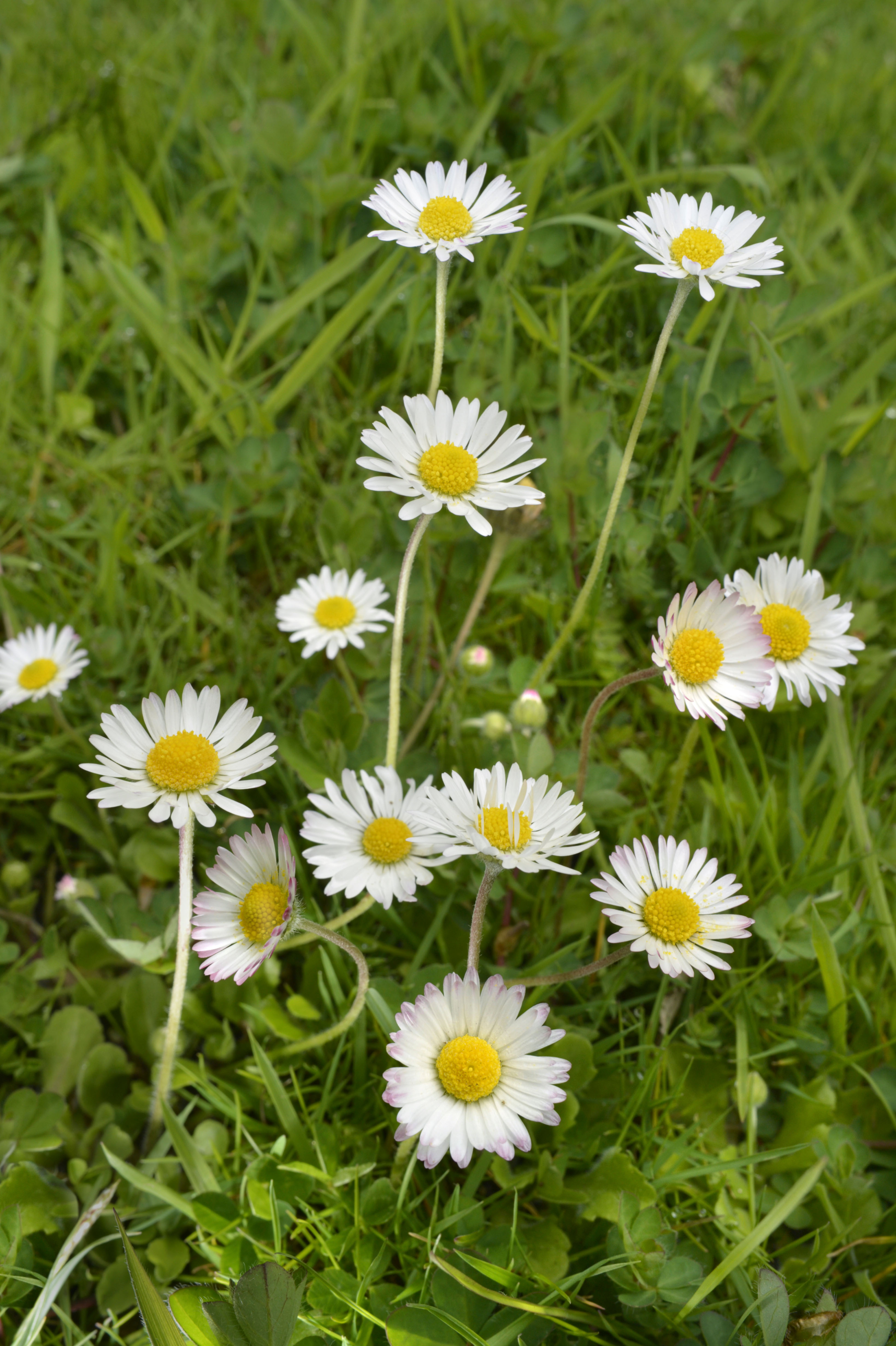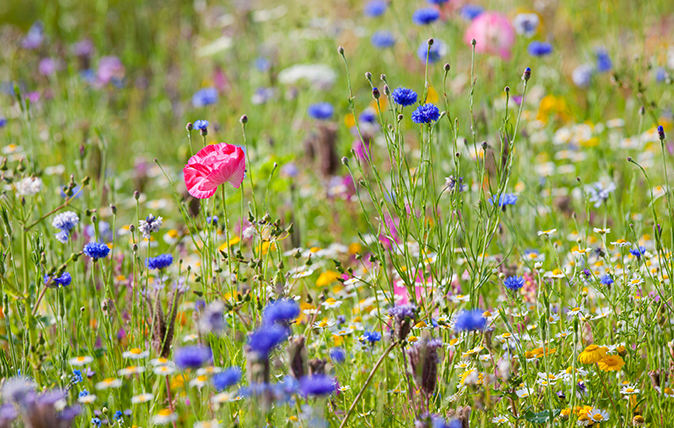At long last Spring seems to be here — and with it, the natural flora that give so much pleasure.
British flora is full of pleasures for those prepared to look. Woodland flowers come early in the spring, before the canopy closes overhead, then the lanes and verges are full of creamy beauty. The foreshore and saltmarsh are always special places for rarities and the crumbling stonework of ancient walls is often festooned with minor treasures, readily presented to the observant eye. Wetlands and watercourses are home to a rich variety of flowers that float on the surface or sit on tufts, defying the close approach. In late summer, the heaths and moors are chequered with visual interest and scent on the breeze.
The very act of breaking the ground brings out the pretty annuals and the most unpromising banks of a new bypass will unexpectedly sprout orchids and cowslips for us to rush past.
Each plant has its unique method of attracting pollinators or distributing its seed. Many still jog the memory with some special attribute lingering from an ancient past when all flowers conveyed a message. From the long list of favourites, we present a selection of seasonal beauties, each a reminder of Nature’s ingeniously varied plan.
A simple guide to the wildflowers of Britain

Corncockle
Agrostemma githago
Once a common cornfield weed, this tall annual with magenta flowers survives in modern garden-meadow mixtures

Ramsons
Allium ursinum
The floor of a limestone wood in spring is often pungently perfumed with this abundant relative of garlic

Pyramidal orchid
Anacamptis pyramidalis
By no means always isosceles in shape, this midsummer orchid’s flower spike favours milder parts of Britain, especially on alkaline grassland

Wood anemone
Anemone nemorosa
A flush of sunshine through the canopy of an ancient wood will open the white flowers of this early flowering lowly beauty

Cow parsley
Anthriscus sylvestris
Shady hedgerows in May foam with the green and white of this familiar umbellifer, now a show-garden must-have

Columbine
Aquilegia vulgaris
A woodland plant on limestone, the flowers of this garden ancestor symbolised a flight of doves to the medieval mind

Thrift
Armeria maritima
Overlooking the sea on ledges, this neat green mat with its pink pincushion flowers is tougher than it looks

Daisy
Bellis perennis
From compacted pastures to suburban lawns, the Anglo-Saxon ‘Day’s Eye’ is a familiar image of retiring modesty

Kingcup
Caltha palustris
Tread carefully to admire this brilliant-yellow flower, which lights up the marsh and woodland stream in early spring

Harebell
Campanula rotundifolia
Powder-blue bells on the slightest of frameworks flickering in the summer breeze on heathy turf: the bluebell of Scotland

Cuckoo flower
Cardamine pratensis
Or lady’s smock, or milkmaids: a film of pastel hue across a damp meadow or grassy verge in late spring. These lovely flowers were chosen by wildflower experts Caz Buckingham and Andrea Pinnington as some of their favourites.

Cornflower (Centaurea cyanus) growing in a traditional hay meadow at College Lake nature reserve, Buckinghamshire.
Cornflower
Centaurea cyanus
Famously bright blue and surprisingly tall, this is another cornfield exile more commonly seen nowadays as a garden annual

Chicory
Cichorium intybus
The tall, solitary, slender plant by a dusty roadside in late summer with a brilliant blue daisy flower on top

Lily of the valley
Convallaria majalis
This traditional favourite among scented flowers can be sought out among the limestone pavements of the Pennines. Beware though: this is among the common plants that are dangerous to dogs and cats.

Sea kale
Crambe maritima
A shallow dome of blue-green, waxy leaves on a shingle foreshore, with richly scented off-white flowers on top

Wild carrot
Daucus carota
An easy umbellifer to recognise because of its distinctively concave, off-white flowerhead on verges and coastal walks everywhere

Foxglove
Digitalis purpurea
Tall and pink, and sometimes white, lighting up woodland and bracken slopes in early summer and irresistible to bees

Teasel
Dipsacus fullonum
An opportunist in cleared ground, producing its water-filled leaves and softly tactile, lilac-ringed, egg-shaped blooms in late summer

Sea holly
Eryngium maritimum
A special treasure to find among the dunes and marram grass, with its silvery foliage and blue flowers

Lady’s bedstraw
Galium verum
One of the minor pleasures among the undisturbed grassland is this delicate, yellow-flowered creature, which, when dried, has the scent of new-mown hay

Meadow cranesbill (Geranium pratense)
Meadow cranesbill
Geranium pratense
Big blue, white or violet flowers on a handsome plant, one of the signatures of midsummer in limestone grassland and verges

Water avens
Geum rivale
Among the marshes and riversides, look out for this quietly elegant plant with its hanging bells of maroon and yellow

Bluebell
Hyacinthoides non-scripta
England’s glory in May, forming massed displays in ancient woods. The pendulous flowers hang distinctively on one side. Gardening writer and regular Country Life contributor Steven Desmond named this as his favourite wildlower ‘because it’s especially British, everyone knows it and it adorns our ancient woods each spring.’

Field scabious
Knautia arvensis
On a tall herbaceous perennial, these familiar shallow pincushions of violet-blue swing about on verges in late summer

Honeysuckle
Lonicera periclymenum
The drifting scent of this hedgerow climber on a May evening is an abiding memory of the English countryside

Bird’s foot trefoil
Lotus corniculatus
The little clumps of bacon-and-eggs in rough limestone pasture are a sign that other floral beauties are nearby

Ragged robin
Lychnis flos-cuculi
Look for the delicate pink flowers of this tall perennial in marshes and by watercourses in early summer

Musk mallow
Malva moschata
On grassy banks in summer, the big, shiny, pink or white flowers above delicate foliage look like a garden escape

Welsh poppy
Meconopsis cambrica
The pleated yellow flowers of this doubtful native are often found in old garden rockeries, where they seed abundantly

Wood forget-me-not
Myosotis sylvatica
Flowering shyly by the woodland edge, this familiar plant’s little stars of blue and pink are known to every dog-walker

Wild daffodil
Narcissus pseudonarcissus
Locally abundant in damp meadows and thin woodland, where its distinctive pale-yellow flowers are admired each Easter.
Tom Coward, head gardener at Gravetye Manor, has previously named these as his favourite wildflowers in Country Life. ‘It’s hard to pick one plant above all others, but, if I have to chose, it would be the wild daffodil,’ he said.
‘We have carpets of them at Gravetye and the sight of their brilliant gold through the meadow, signalling the start of spring, is one of the most marvellous things in the year.’

Bee orchid
Ophrys apifera
A special treat for the observant eye: in limestone grassland, where its arrestingly convincing flowers are backed with a pink triangle.
It’s also a flower with committed fans: Alan Titchmarsh himself has named it his favourite wildflower, calling it ‘a curiously shaped flower of such insectivorous complexity that it seems unreal’ when asked in a 2015 Plantlife survey to find the nation’s favourite wildflower.
‘Dozens of them erupted from the grassy bank outside a house on the north coast of the Isle of Wight,’ Alan added. ‘Then, I bought a house there myself and found that they grew in the rough turf of my garden, which was a dream come true. Despite their capricious nature, they remain my favourite.’
Mary Keen agreed, saying that ‘bee orchids on chalky downs with skylarks singing overhead never fail to give me a lurch of pleasure.’

Early purple orchid
Orchis mascula
The richly hued blooms above spotted leaves are often seen each May among banks of cowslips and primroses

Field poppy
Papaver rhoeas
The scarlet opportunist, an annual that turns up wherever soil is disturbed, its seeds lying dormant until the day comes

Cowslip
Primula veris
Nowadays, a favourite sight in sheets on motorway verges, where its butter-yellow bunches thrive on an annual mowing regime

Primrose
Primula vulgaris
A favourite woodland flower, adorning banks and Cornish hedges each spring, each plant is seen to be either male or female to the close observer.
‘The primrose is my favourite harbinger of spring,’ wrote gardener, author and National Garden Scheme chief executive George Plumptre for Country Life back in 2015, ‘and an integral part of proper English countryside, for the way it suddenly appears along banks and pathways and its most delicate, natural shade of yellow that is lost in all the hybrid plants produced for gardens. It’s a flower that reminds people of their childhoods and is, therefore, strongly evocative.’

Bulbous buttercup
Ranunculus bulbosus
A medium-height buttercup of compacted grassland, readily identifiable from its reflexed sepals under each shining bloom

Dog rose
Rosa canina
One of several species of wild rose, whose pink flowers decorate the hedgerows through which its thorny shoots have scrambled

Goat’s beard
Tragopogon pratensis
A roadside-verge novelty whose elegantly upright buds open to yellow dandelion flowers exclusively on sunny summer mornings

Sweet violet
Viola odorata
A woodland-edge beauty of early spring in blue, purple or white, with a memorable scent for those who are prepared to grovel

Common yarrow
Achillea millefolium
With soft, feathery leaves and pungent scent, this flower of pasture and wayside attracts butterflies and has sired numerous colourful garden cultivars

Scarlet pimpernel
Anagallis arvensis
They seek him here, they seek him there—this pimpernel is a bright, but tiny annual on floppy stems, the flowers closing up in inclement weather
How to grow fritillaries
Botanical artist and Fritillaria specialist Laurence Hill reveals his top tips.
The nation’s favourite wildflower
Which wildflower gets your vote?




